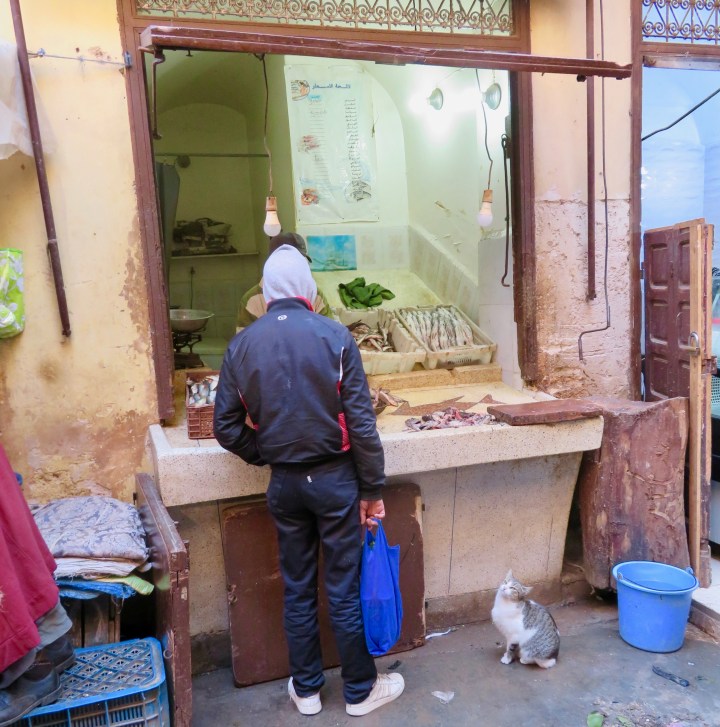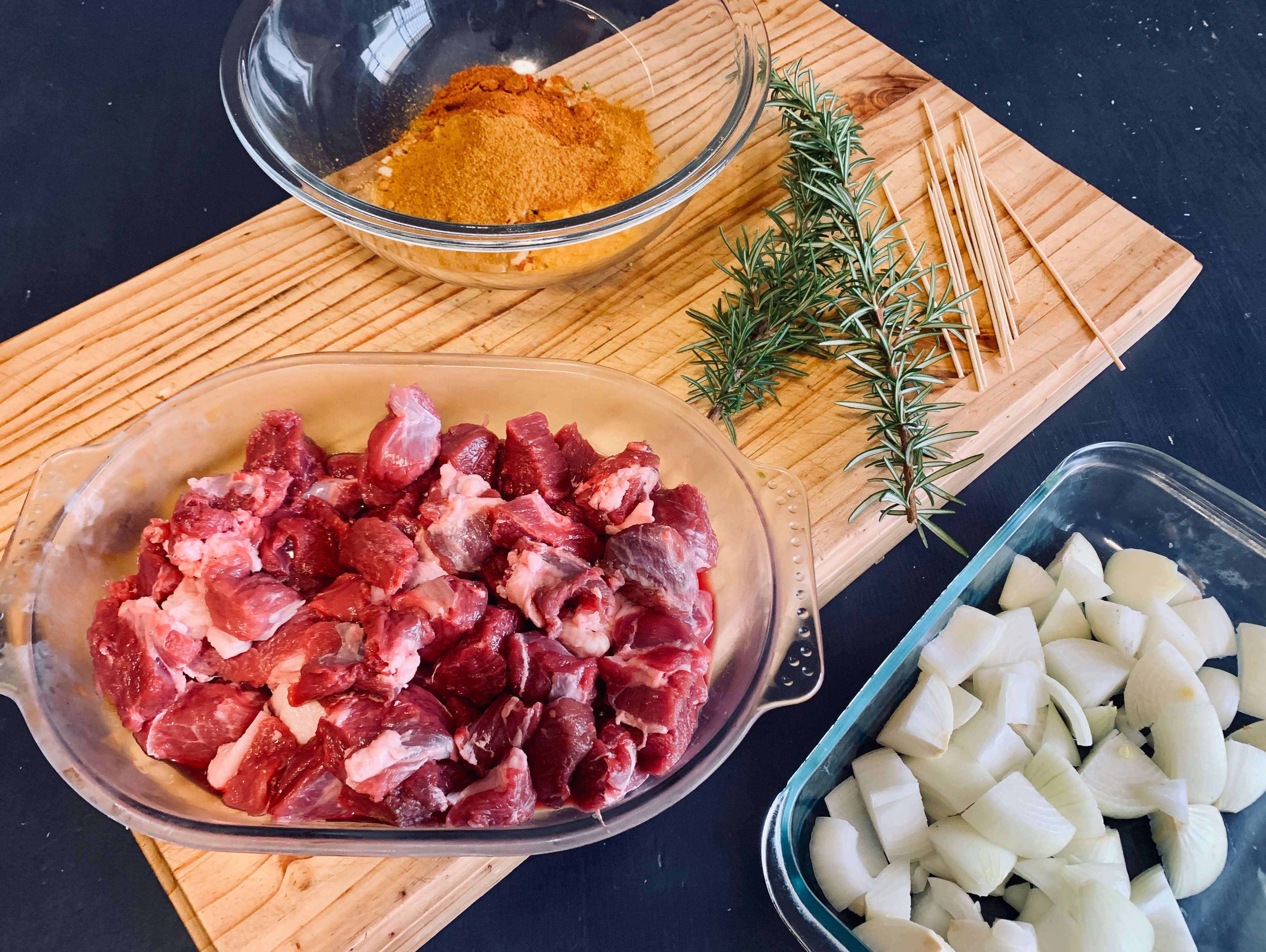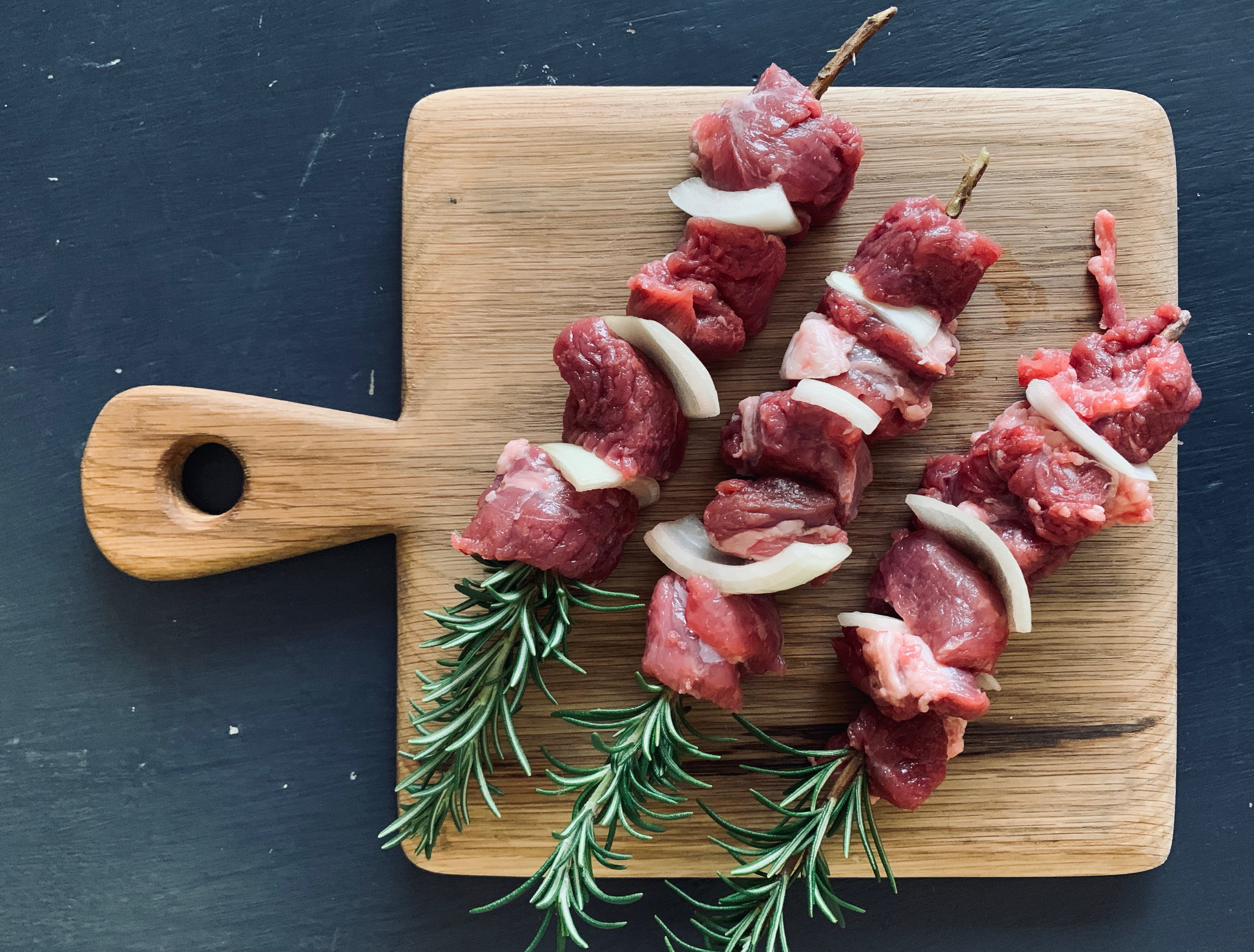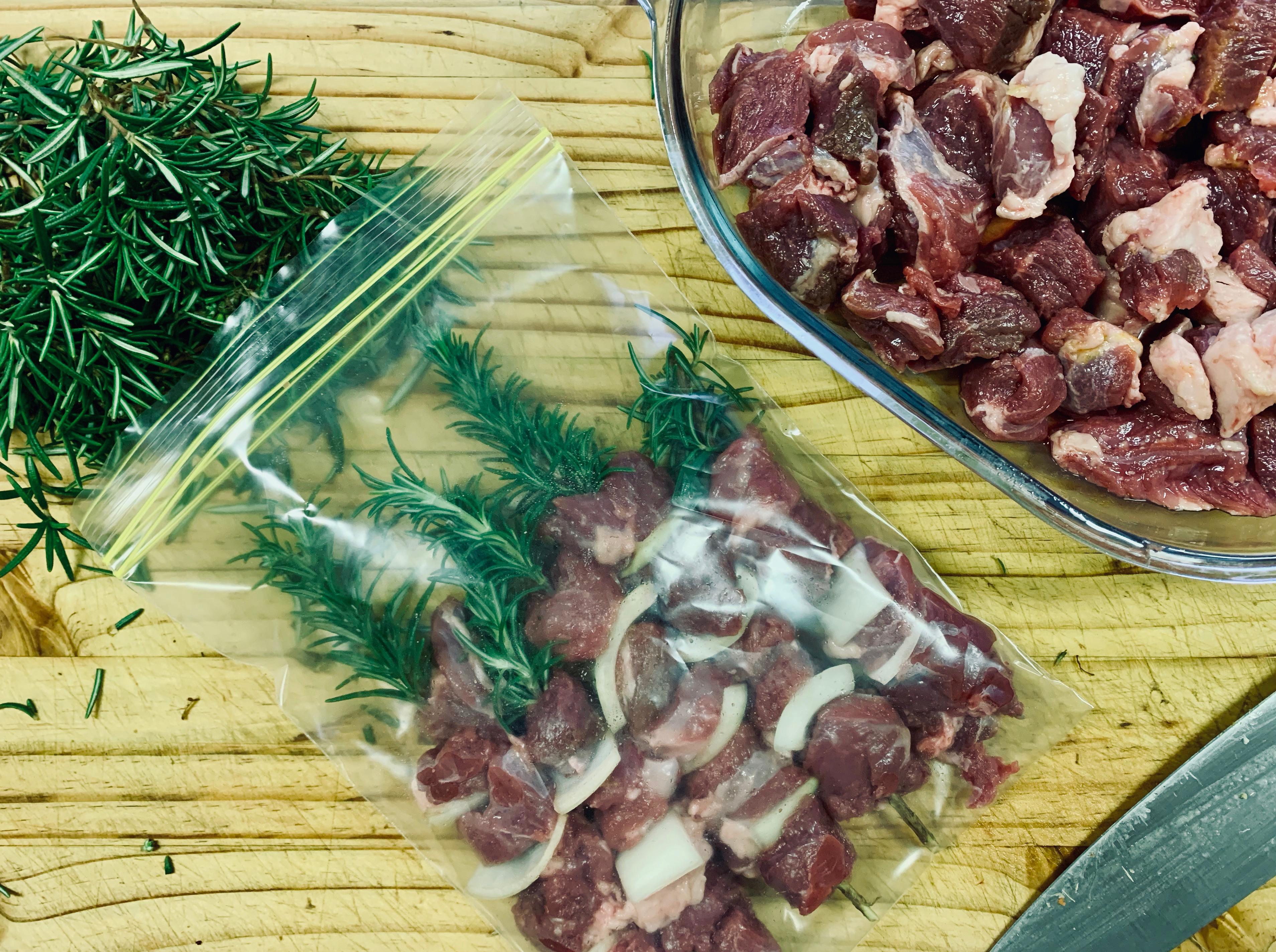SECRET SOSATIE
A taste of home, on a stick

It probably all started here, in southern Africa, some 200,000 years ago. Imagine a bunch of homo sapiens sitting around a fire, eating their hot grilled meat from sticks... heads tilted slightly and nodding at each other in approval to the agreeable taste. We still eat it that way today.
Cradock celebrated its seventh annual Karoo Food Festival last weekend; it’s a real feast for the senses and an unpretentious ode to how we do things in the Heartland. Karoo people love to share – food, recipes, fires for braais, a couple of beers, stories…. And at the Food Fest every year, we get to do all of this and include out-of-towners in the joy.
The quality of food on offer at the Karoo Food Festival is unrivalled. We’re talking real food, all traceable back to the source in two or less steps. Usually, it’s the very producers offering the final foods to consumers.
The chicken used on the burgers and kebabs sold at the Vino’s Braai Stall, for example, are free-range birds from Vino’s owner Karenza Liebenberg’s own farm business. Charles Garth’s famed “afvalpotjie” (tripe stew), again, is sourced from the local sheep farmers of the region, all within a 50km radius. Even the orange juice on sale is “Squeezed and Freezed” in a next-door town, Kirkwood, renowned for its world-class citrus production. SOGA Organic boasts SA’s first and only certified organic citrus juice products, made by a handful of Sunday’s River Valley farmers. It’s the real deal.
And then there’s the sosatie. An omnipresent favourite at any worthy food festival and a suited poster-child for a Karoo food celebration. It’s the uncontended king of all kebabs. Succulent, tender lamb with just the right amount of juicy fat, onion and smoke… all covered by a sweet and fragrant sauce that transforms to that iconic semi-char when tanned over the coals.
During the first braai night of the Karoo Food Festival, beered-up partygoers were literally buying and eating the sosaties from the fire… the coals could not burn out fast enough or another batch would be gobbled up. Ouma Delene’s recipe never fails to impress.
Apart from being delicious, sosaties also link us to our early human roots and celebrate the confluence of the human and cultural developments that followed – both great and tragic.
If we’re being to be technical, it probably all started here, in southern Africa, some 200,000 years ago. I imagine a bunch of homo sapiens sitting around a fire, eating their hot grilled meat from sticks… heads tilted slightly and nodding at each other in approval to the agreeable taste. We still eat it that way today.
There are other meat-on-stick delights the world over, worthy of praise. The Portuguese Espetada, Turkish Shish Kebab and Malay Satays were a thing long before South Africans put a specific label on our “sosatie”. It’s believed that the word “Sosatie” is derived from the southeast Asian term “Satay” or “Sate”, from where we borrowed our iconic sweet-and-sour spice mix.
Many Afrikaners will tell you that their family recipes for sosaties date back generations. This may be true, but more interesting still is how this unique mix of ingredients came to be a staple in South African homes.
From the 1600s to the mid-1800s, South Africa’s Cape of Good Hope was a well-stationed trading post for many things; fresh fruits, vegetables and, sadly, humans. These people were torn from their homes and families and shipped across the world, from faraway lands including Indonesia and Malaysia. Once in the Cape, the enslaved people did what they could to reconstruct their lives and drew on their collective cultural and religious memory to do so.
Cariema Isaacs, expert Cape Malay cook and author of the beautifully-written Cooking for My Father in My Cape Malay Kitchen and her latest, Spice Odyssey, says the enslaved people wanted to hold on to what they knew about home.
“These people knew for sure that they would never see their families again. There was no way for them to make their way back home. So, the only thing they could do was to create the traditions that they knew here, in South Africa.
“A lot of people actually smuggled spices from their homelands into South Africa,” Cariema says, “not because they wanted to sell them, but rather to cook with and to remember where they came from.”
It was risky. The spice trade was big business for the Dutch East India Company, and if caught, spice smugglers would be put to death.
They literally risked their lives for a taste of home. The iconic “satay” or “sate” was a typical Tuesday-night favourite in Southeast Asia, where ingredients included lemongrass, ginger and galangal. These ingredients weren’t available to the early Cape Malay cooks, but the dry (often smuggled) spices were… and so the early, truly first South African sosatie was brought to life, by a large slave expat community cooking their heritage foods from memory.
“Even though the sosaties we know in South Africa today might not look or taste exactly the same as their Indonesian or Malaysian forerunners, it’s only because it was adapted along the way because some of the ingredients weren’t available,” Cariema says.
Today, we make our beloved sosaties not oblivion of its sombre origins but as a symbol of a proud and resilient South African character.
The origins of human trade aside, making sosaties the right way can sometimes feel wrong. Lamb sosaties, for example, require nothing but the prized leg of lamb… cut up into 3cm x 3cm squares. Sacrificing the Sunday roast is controversial, to say the least, but the courage to do so will be rewarded for many braais to come.

Making Sosaties; You’ll need the iconic Cape Malay spice mix, onions, lamb cubes and rosemary sticks.
The best cut is needed to ensure a tendermost bite in each mouthful. The idea is to be able to eat it with one hand only, cube by cube, using your teeth to slide the meat from the stick as you go. If it’s too big, or too saucy or tough (heaven forbid) it defeats the purpose – you shouldn’t need a knife and fork or plate. You also don’t need a serviette, sosaties are finger-licking food.
In true Cape Malay fashion, dried fruits often star alongside the lamb to provide a sweet relief in-between meaty morsels. Dried apricots and peaches are favourite contenders, and these should be soaked in a bit of rooibos tea to plump up before being threaded.
Onions are a must. Some recipes require whole baby onions that are partially cooked beforehand. However, I prefer using one layer of raw onion to sandwich each lamb cube. This ensures that, after braaiing, a bite of lamb will always be accompanied by just the right amount of sweetly-charred onion.

Threaded sosaties ready to be sauced.
Then, the sauce. Considering the allure of meat-on-sticks the world over, I would argue that this factor is what sets South African sosaties apart from the rest. The sauce links South African lamb with those bold Indonesian spices in perfect harmony.
My recipe is an adaptation of our Lombard family recipe and starts with the usual southeast Asian blend of chillies, ginger and garlic. The sauce is boiled together beforehand, then cooled, and then poured over the threaded sosaties to marinate.
Last, sosaties must always be braaied or, at the very least, seared in a hot griddle pan. The sauciness needs to caramelise, and by putting them into a pan or baking tray you will create a steaming/broiling environment, which will toughen up – not tenderise – the specific cut of meat used.
I remember the first time I made sosaties. I was studying at Stellenbosch and my mother had frantically (out of fear that I might starve… I don’t know) sent me a whole leg of lamb in a parcel from home. The thing could barely fit in my small dorm room fridge, and I had absolutely no means of cooking it whole. So I decided to cut it up for sosaties that could be more easily and happily braaied at one of the many varsity mixers. I boiled the sauce in my microwave. The sharp, acidic smell convened a small crowd of hungry, curious mates to our room where I conducted (what I now realise was) my first-ever food demo.

The rosemary twigs provide extra flavour from within.
A day of classes bunked proved worth it when I finally stacked the marinaded, ziplocked bags of sosaties into the mini freezer. And when it was finally time to braai them, success. I was 900km away, but they tasted just like home to me. That’s the magic of food, especially if made from memory…

Sauced sosaties. These need to marinate at least 48 hours before braaiing, or can keep up to 2 months in the freezer.
I can only imagine – and hope – that they reminded their original makers of their faraway homes and families too… longing for them some 9,000km across the Indian Ocean.
Next year’s Karoo Food Festival will take place in Cradock from 24 to 27 April.
Try making your own sosaties with the (revised) Lombard recipe:
1 leg of lamb, cubed
3 onions, cut into chunks
+/- 18 hard rosemary sticks, washed OR sosatie sticks, soaked
1 cinnamon stick
1 star anise
5 cardamom seeds, crushed
1 Tbs fresh ginger, finely grated
1 clove garlic, chopped
1 Tbs fresh Chillies, chopped
1 Tbs Rajah Medium Curry Powder
1 Tbs Cartwrights Extra Spicy Curry Powder
1 Tbs Pakco Masala Curry Powder
1 Tbs ground Turmeric
800g brown sugar
1 litre white vinegar

The result: perfectly tanned sosaties with just the right onion-to-lamb ratio.
Toast together the cardamom, star anise and cinnamon before blending together in a mortar and pestle (or blender) with ginger, chillies and garlic. Return to the pan and fry gently. Add the curry powders and turmeric to form a paste. Remove from heat. Add the vinegar and brown sugar, stirring occasionally to dissolve the sugar. Leave to cool completely.
Thread the cubed lamb and slivers of onion onto the stick or rosemary, if using. Arrange in freezer bags and pour over the cooled marinade. Keep refrigerated for at least 48 hours before braaiing or freeze for no longer than 2 months. Salt generously whilst braaiing. DM






 Become an Insider
Become an Insider